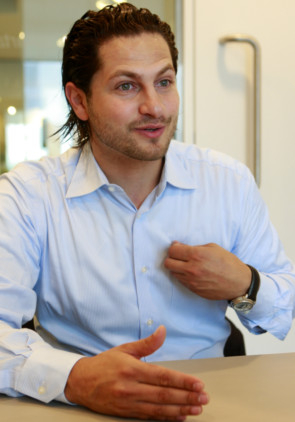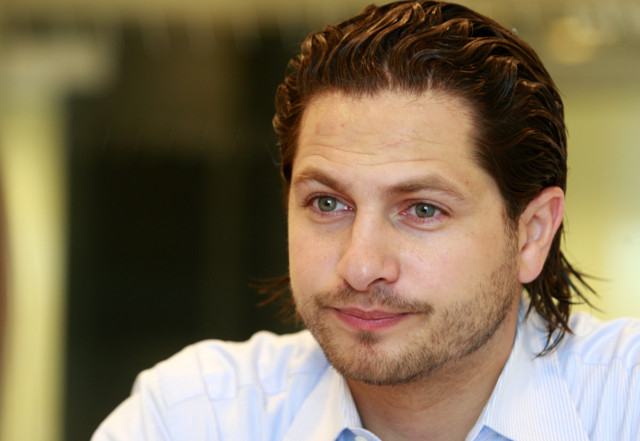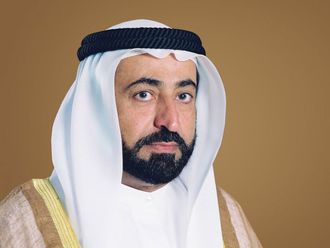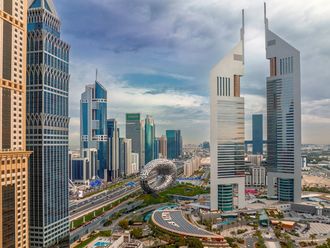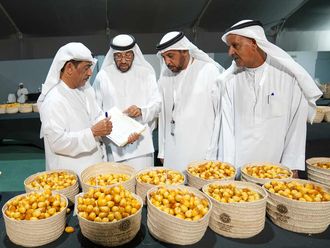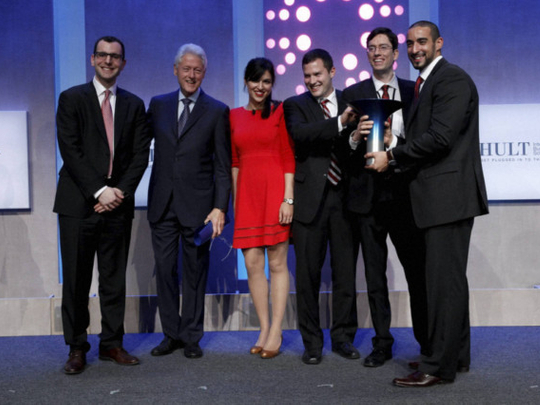
Last week, on September 23, the much-awaited winners of the worldwide comepition, the Hult Prize, was announced and a team of MBA students from the Desautels Faculty of Management, McGill University, Canada, won the coveted $1 million of the 2013 contest, stealing a march over nearly 10,000 students from around the world who participated in the contest. This year’s theme was focussed on securing food for the undernourished communities of the world living in urban slums,
Education spoke to the young and dynamic Ahmad Ashkar, founder of the award, who visited the Hult Business School, Dubai campus recently, on the concept of using social entrepreneurship to solve the planet’s pressing issues.
How did you think of this concept?
I started it as a group activity when I was an MBA student at Hult. It was a personal initiative. We were looking at the power of networking to solve global challenges that beset our world today; bringing together like-minded individuals from around the world to address world issues such as hunger, poverty, clean drinking water, etc. The thing is, the younger generation was not really big on social entrepreneurship because they could not see a business model there. They believed that they couldn’t achieve the kind of social status (in that field) another job would give them. Our idea was to make social entrepreneurship sustainable for young people where they could see a market opportunity and reap profits while making sure that the project ensured success in whatever they set out to resolve. But now, they have an opportunity to address world problems and leave a legacy.
In the pilot year, we pitched the idea to Bertil Hult, chairman Emeritus of Hult International Business School and founder of the Education First initiative. He was impressed with the response of a more than a 1,000 applicants from around the world who came up with ideas to do good. He saw the potential in the power of networking and sponsored the idea, bringing it under the umbrella of Hult International with a $1 million funding. The Clinton Global Initiative joined hands with him and that is how the ideas became the Hult Prize Initiative. Today, we have more than 11,000 students from 150 countries from 385 universities participating in sharing their ideas on the Initiative each year.
What is the science behind it?
To run any project, one has to look at driving the cost down for delivery. As you continue to service more customers and the numbers increase to a point where your cost of delivery comes down to zero. If, for instance, it takes $10 to deliver a gallon of water to one person, it will take $9 to deliver to a second person and the cost will continue to fall until it will virtually cost you nothing to deliver the same thing to the 10th guy.
The moment you deliver water to the 11th person, you are in profit. You can either take the profit or invest it. It’s doing good as a business model.
How does the initiative work? Since its inception in 2009, what kind of projects were awarded the prize?
The members of the Clinton Global Initiative who work closely with us select a challenge for that year. They then issue a start-up manual and a call for participants for creative start-ups which contain a sustainable business model. In 2010, the theme was One Laptop per child, given to students of Hult Business School. In 2011, the theme was ‘Clean Water’ and the University of Cambridge led by Akansha Hazari bagged the award; in 2012, the theme was ‘Combating Global Poverty’ and the award was jointly won by teams from Carnegie Mellon, NYU Abu Dhabi and Hult International Business School.
Could you elborate on one winning project?
Last year, one of the notable winning projects was one created was by Akansha Hazari from India, a Cambridge Judge School business graduate who created the unique programme called m.Paani to solve the water crisis in urban slums of India. She created a model based on a key insight that people in the slums had more access to cell phones than to water. She calculated that around the world, nearly 3.5 billion people who lived in slums did not have access to sanitation or clean drinking water, but 5.1 billion people had mobile phones. She decided to connect the water and sanitation issues with something that is the lifeline of the masses — the mobile phone.
She created a plan where a women’s self-help group in one slum community can take a water and sanitation loan from a microfinance institute. Then, a partnership will be created with a local telecom provider to create an incentive programme based on mobile phone usage. When the community tops up their phone, they earn “water points” for their community. These water points equate to money that collects in a community-owned fund, and which is managed by the self-help group. The fund is then used to cover philanthropic costs and to subsidise the community water and sanitation loan. The fund will continue to grow even after the water and sanitation loan is repaid. This will be used to help maintain the infrastructure and to make the community aware about hygiene practices.
How does this work with government agencies funding charity projects?
The mission of the Hult Prize Initiative is to introduce more business-minded solutions to the world’s problems. This is not going to happen without the support of the governments of various countries where trillions of dollars are allocated for work like this. All governments are very supportive of social business and social entrepreneurship where their money is being put to good use. The idea would be for governments not to get involved in the actual distribution of food, water or any such thing, but being able to give the amount allocated for it to the entrepreneur who comes up with a business model for the same. The prize is about recognising the cutting edge of innovation in this field.
You wear many hats – a banker, management consultant, real estate specialist, World Economic Forum (WEF) speaker... What is the common strand in these aspects of your personality?
I try to float where the fruit is low and easy to pluck. In other words, I try to play in areas where I can have an impact. I looked up social entrepreneurship as I felt there was plenty of blind money. Very few of my colleagues were getting into social entrepreneurship. This sector is like the wild wild west. Take the example of a sprawling slum in Asia where 2 million people live. If an average person generates $3 in a day, multiply that by two million at least. Two million x 30 days x 12 months is = $72 million. For an entrepereneur, there is a simple market opportunity here.
What part does innovation and strategy play in the success of a start-up?
Innovation and strategy are very critical as there is a methodology that works within the confines of specific economic conditions, government regulations and the ability of an entrepreneur. One size does not fit all. Innovation is a double-edged tool – it can be used for good and bad. It is like lightining captured in bottle, an idea that can be scaled and applied to other situations. It builds jobs for youth, tackles unemployment. When you can break down costs from $600 to $6 in start-up businesses, eco-systems change.
You coined the word ‘crowd science’. Can you elaborate on that?
We invented the term. I am often asked about the “secret sauce” of the Hult Prize, and the answer is in sourcing ideas from the crowd for social good. It is less of an art than a science. Over the past four years, through multiple iterations, we have developed a well-defined process that we call crowdscience: a set of rules that reliably produce innovative ideas that can be implemented to solve large-scale social problems. There are so many things to utilize and leverage in a crowd to have an impact. Once those ideas are generated, the challenge is to fit them in a concise framework and get them through to the market.
You are a spokesperson for the Arab youth. What are the real issues confronting them and how can one really tap into this huge collective energy in Arab countries?
When you have something to lose, you do not fight back. I feel if one was to channelise the energy of the Arab youth, jobs have to be created and eco-systems created to support entrepreneurship. If the youth have this created, they are likely to focus on those aspects. Many members of the youth think the existing infrastructure can be ignored when it cannot be. Besides that, globally, there is an education gap. Youth in the Middle East both willing and able to face the challenges ahead of them and through engagement with the Hult Prize can express, identify and finance their ideas.


